
City tour Chur old town
Duration: 1:30 hours or 2 hours

8 Activities
Filter
Better than 4.5 stars
Better than 4 stars
Better than 3.5 stars
Better than 3 stars
No Rating

Duration: 1:30 hours or 2 hours

Duration: 1:30 hours
Why book with Swiss Activities?
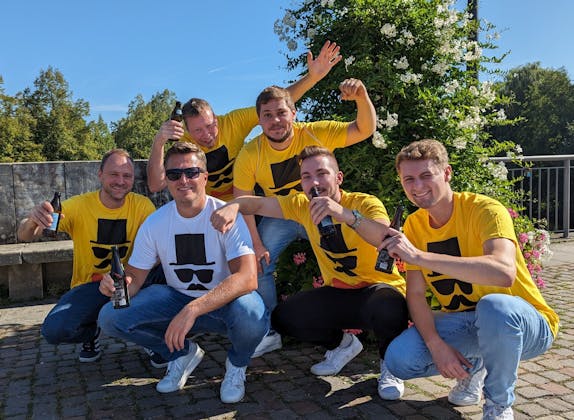
Validity: All day

Validity: All day
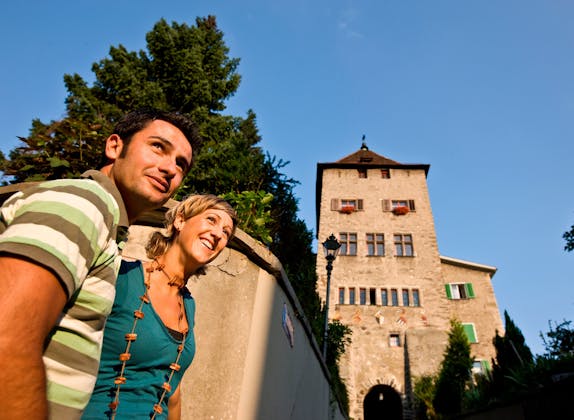
Validity: All day
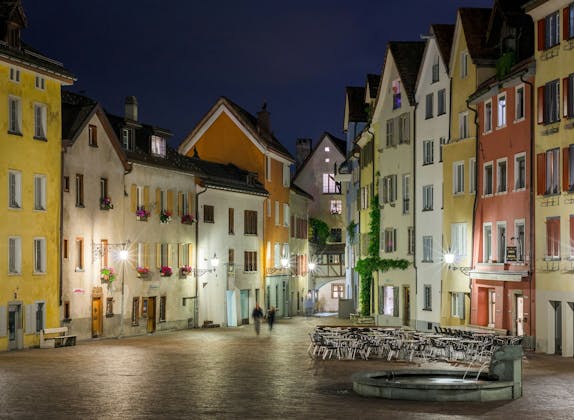
Validity: All day

Validity: All day

Duration: 2:15 hours

Tour
Duration: 1:30 hours or 2 hours
booked 140 times

Tour
Duration: 1:30 hours
Why book with Swiss Activities?

Games

Games
booked 8 times

Tour

Games

Games

Games
Duration: 2:15 hours
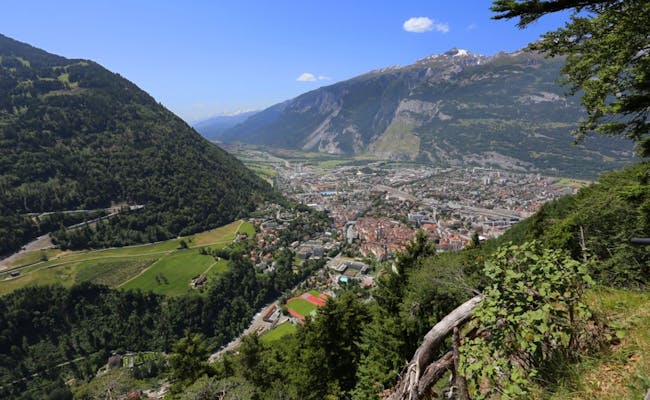 Panorama Summer (Photo: Yvonne Bollhalder Chur Tourism)
Panorama Summer (Photo: Yvonne Bollhalder Chur Tourism)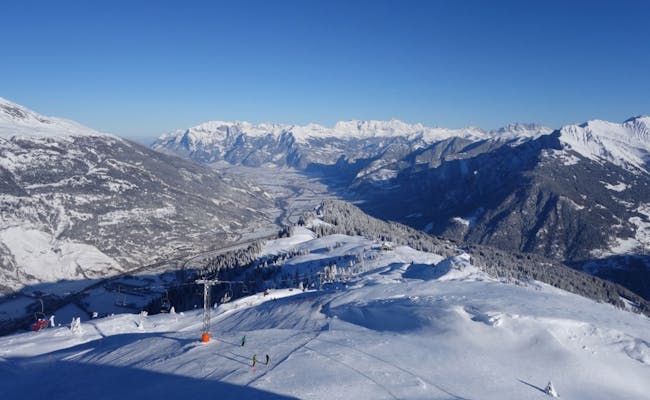 Skiing at Brambrüesch (Photo: Michael Christ Chur Tourism)
Skiing at Brambrüesch (Photo: Michael Christ Chur Tourism)Chur is the oldest city in Switzerland. It was founded by the Romans as Curia Raetorum on a site that was previously settled by Celts. Chur is known as a hub for the Rhaetian Railway and for its particularly charming and car-free old town.
Chur is located in the Grisons Alps in the broad valley of the Alpine Rhine on the eastern side of the river. From here, you have quick access to numerous sports activities, both adventurous and relaxing.
You can reach the mountains directly from the city center. The aerial cable cars take visitors in just a few minutes to the local mountain, Brambrüesch (1600 m a.s.l.). Chur is the capital of the canton of Graubünden.
The area around Chur has been inhabited for over 5000 years. In some places, even much older evidence of our ancestors has been found. The beautiful old town of Chur may not be that old, but it's definitely worth a visit.
The houses in the old town date back to the 12th to 18th centuries. The central Chur Post Square leads over Poststrasse to the old town. The town hall there was built in the 15th century. From Post Square, the old town extends further to the Bishop's Castle and the Plessur River.
The St. Luzius Church was built on top of a Carolingian three-apsidal hall church from the 8th century. The St. Stephen Church stands on the remnants of an early Christian burial site from the 6th century. In the old town, you'll find many guild and residential houses from the 16th to 18th centuries.
It is considered one of the most beautiful old towns in Switzerland. One very positive aspect is that Chur's old town is almost entirely car-free. Additionally, red signs guide you to the most beautiful sights. If you prefer a professional city tour through Chur, you'll find a wide selection available.
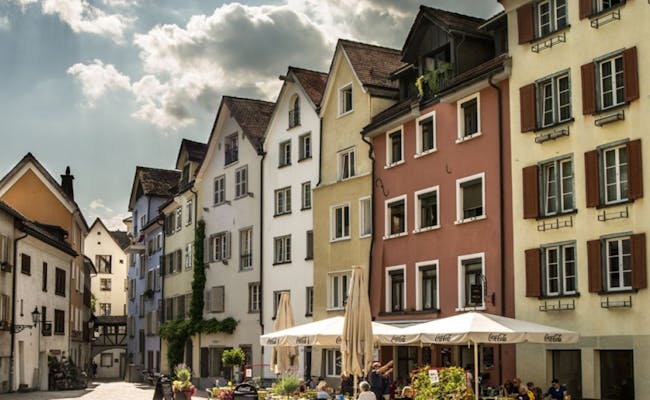 Old Town (Photo: Chur Tourism)
Old Town (Photo: Chur Tourism)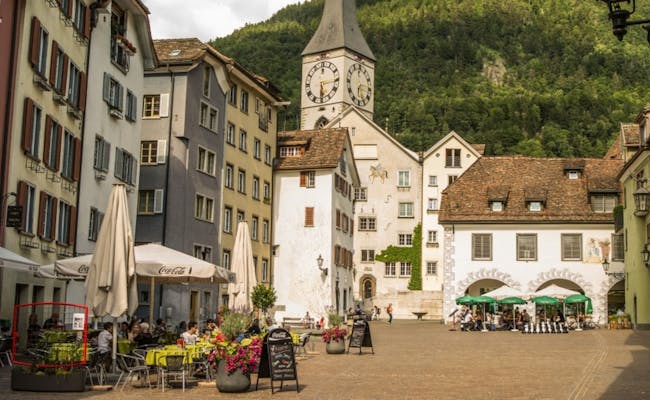 Old Town (Photo: Markus Buehler Chur Tourism)
Old Town (Photo: Markus Buehler Chur Tourism)The castle was built in 1732/33 on a hill in the Hof district above the old town. The listed building with its inner courtyard is still used today as the official residence of the bishop of the diocese of Chur. Rich stucco decorations adorn the facade of the castle
Directly after the consecration of the cathedral opposite, the construction of an episcopal castle began as early as 1272. The present building is the result of a redesign during the Baroque period
The former canons' houses adjoin the castle in the direction of the old town.
Opposite the Episcopal Castle stands the mighty Cathedral of St. Mary's Assumption, also above the Old Town. It was built in the period from 1150 to 1272 on the ruins of a predecessor cathedral. The first cathedral dates back to around 450. Due to the long construction period, the cathedral contains elements of Romanesque, late Romanesque and Gothic styles.
Inside, the magnificent high altar and beautiful frescoes in the side aisles are especially worth seeing. The ceiling paintings were created in the Baroque period of the 17th century. The four apostle columns, two guardian lions at the choir entrance and the lion rider in the pre-crypt are among the special medieval masterpieces from the time around 1220.
From the outside, the cathedral looks rather plain.
 Domschatzmuseum (Photo: Hannes Heinzer Chur Tourism)
Domschatzmuseum (Photo: Hannes Heinzer Chur Tourism) Cathedral of the Assumption of Mary (Photo: Chur Tourism)
Cathedral of the Assumption of Mary (Photo: Chur Tourism)In Chur there are very many meeting places and venues for culture. The theater of Chur is the largest in the whole canton.
 Theater (Photo: Chur Tourism)
Theater (Photo: Chur Tourism)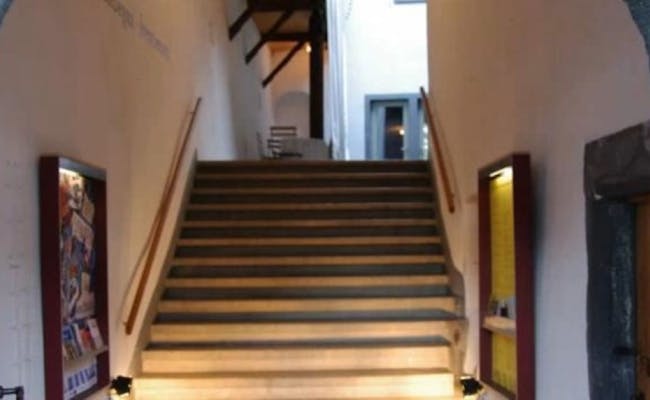 Klibühni (Photo: Chur Tourism)
Klibühni (Photo: Chur Tourism)If you love museums, Chur has plenty to offer. Here are some of the key museums:
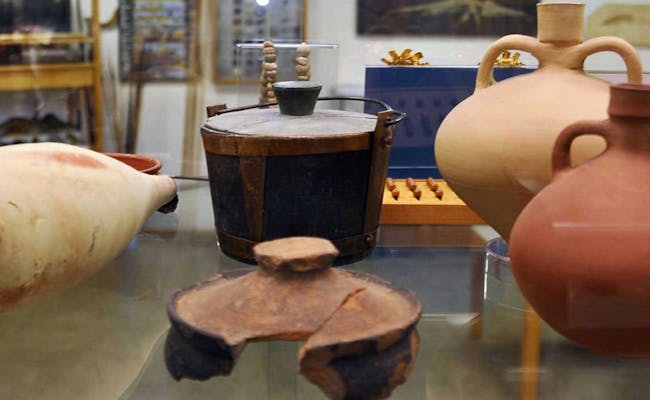 Museum of Prehistory and Early History (Photo: Chur Tourism)
Museum of Prehistory and Early History (Photo: Chur Tourism)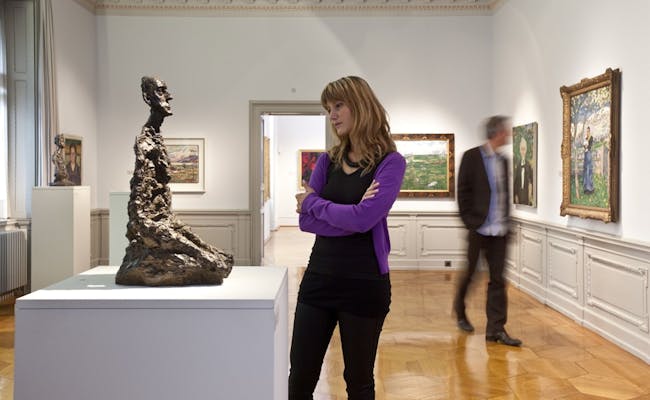 Art Museum (Photo: Andrea Badrutt Chur Tourism)
Art Museum (Photo: Andrea Badrutt Chur Tourism)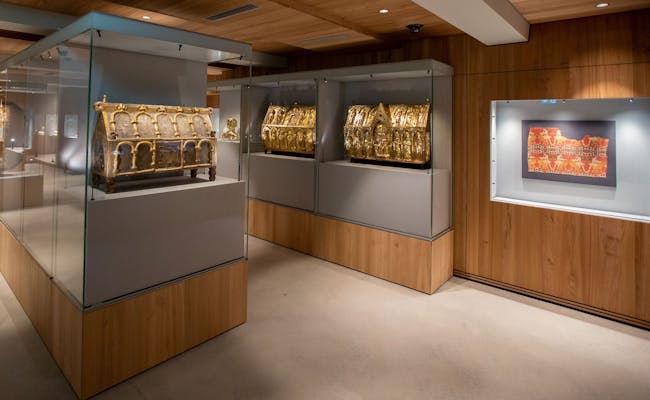 Domschatzmuseum (Photo: Hugo Hafner Chur Tourism)
Domschatzmuseum (Photo: Hugo Hafner Chur Tourism)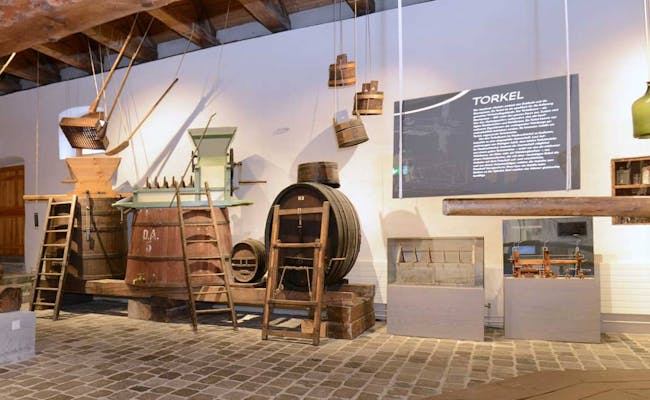 Wine Museum Torculum (Photo: Chur Tourism)
Wine Museum Torculum (Photo: Chur Tourism)Art is highly valued in Chur. While these two locations aren’t museums, they offer collections for the public:
Würth Art and Culture Forum: The Würth Forum is an exhibition space for art in the Lacuna neighborhood. It includes around 18,000 exhibits (sculptures, paintings, and graphics). The changing exhibitions are complemented by a sculpture park.
Fundaziun Capauliana: This collection comprises Grison images and art-historical documents located at Rheinfelsstrasse 1. About 28,000 items include original paintings, graphics, postcards, maps, posters, and photographs spanning five centuries.
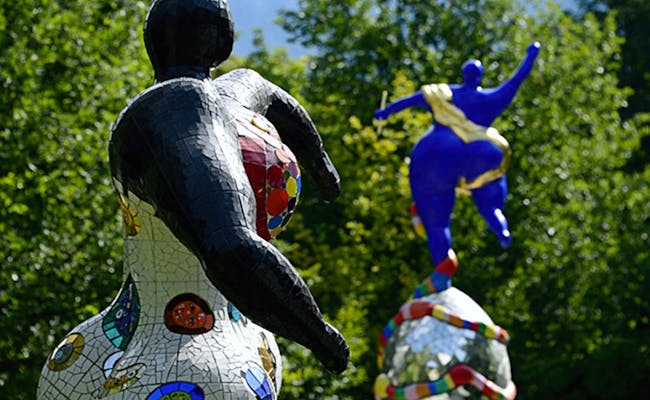 Forum Würth (Photo: Chur Tourism)
Forum Würth (Photo: Chur Tourism)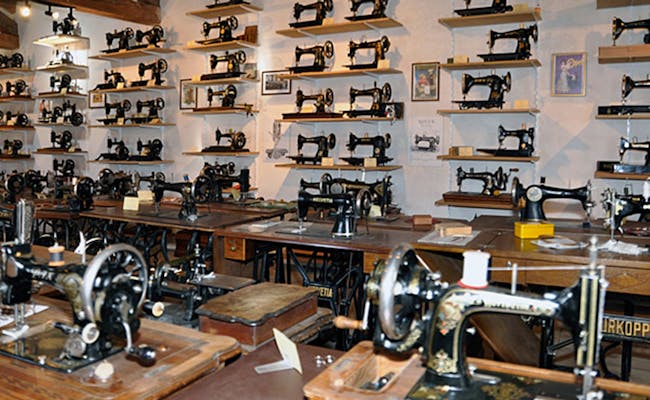 Sewing Machine Museum (Photo: Chur Tourism)
Sewing Machine Museum (Photo: Chur Tourism)Some sights are respected as components of the total of 24 national cultural assets in Chur
These include, for example:
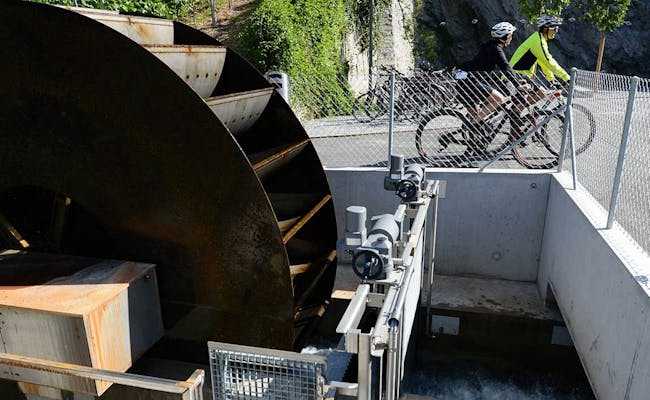 Museum KW SAND (Photo: Chur Tourism)
Museum KW SAND (Photo: Chur Tourism)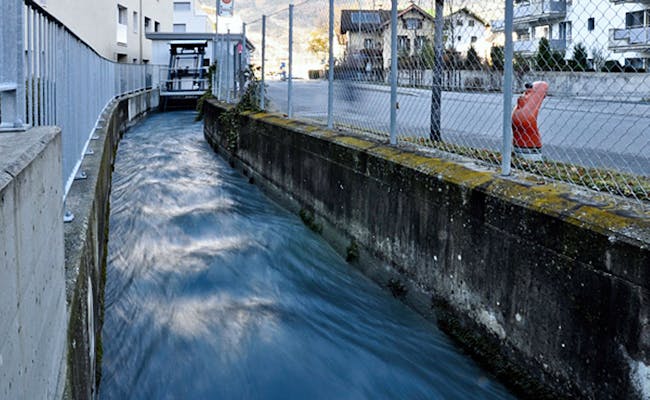 Museum KW CADA (Photo: Chur Tourism)
Museum KW CADA (Photo: Chur Tourism)Around Chur there are many popular destinations for excursions. Due to the location in the Rhine valley, you can easily reach the neighboring villages in the valley. You also have the choice to look for a nearby destination in the mountains. The mountain railroad to the Brambrüesch starts in the middle of the city of Chur.
About 10 km west of Chur you will come across Tamins. The village counts as a gateway to the fascinating world of the Rhine Gorge in the Ruinaulta. The villages of Tamins and Reichenau are located at the confluence of the Vorderrhein and Hinterrhein rivers. Here is also the station Reichenau-Tamins of the Rhaetian Railway. At this station the railroad lines to the Surselva valley and to the central Grisons separate.
Reichenau Castle, which belongs to the municipality of Tamins, can be reached via the Emser Bridge. It dates back to the 17th century and is now used as a winery. Visits to the castle are combined with wine tastings.
Via the A13 highway south of Chur you reach the village of Rhäzüns. Here you will find a very interesting church, which used to serve as a parish church for the villages of Bonaduz and Rhäzüns. It dates back to the 10th century. The church is easily recognizable because it stands on a wooded hill between Rhäzüns and Bonaduz. It is a high plateau on the steep bank of the Hinterrhein. You can reach the church from Rhäzüns in about ten minutes on foot.
The walls are made of quarry stone masonry, roughly plastered. The corners are reinforced with tuff stones. The magnificent paintings inside were created from the middle of the 14th century, when a new choir was also built. They depict, for example, the legend of St. George, a dragon fight and scenes from the Old and New Testaments.
According to a legend, the church was built on this spot in thanksgiving. Exactly here, in the 4th century, St. George is said to have been on the run. He had crossed the Rhine with a mighty leap of his horse
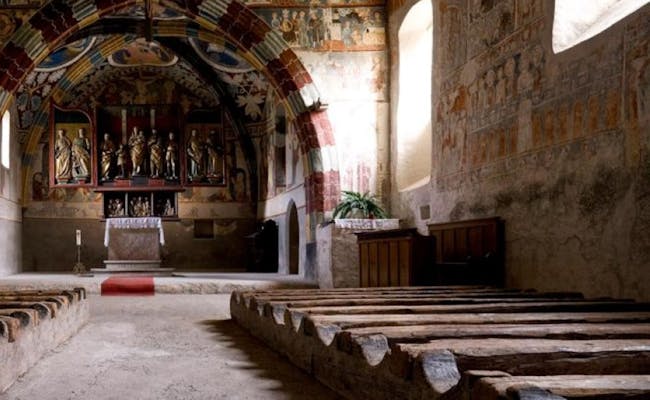 Church Sogn Gieri Rhäzüns (Photo: Chur Tourism)
Church Sogn Gieri Rhäzüns (Photo: Chur Tourism)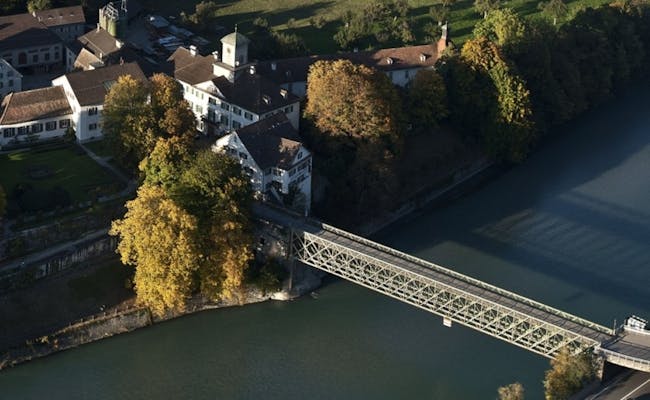 Tamins Castle Reichenau (Photo: Chur Tourism)
Tamins Castle Reichenau (Photo: Chur Tourism)The Rheinschlucht was formed by a massive rockslide around 9,500 years ago. Initially, a dammed lake about 25 km long was created from the debris. Over time, the river cut through the rubble and flowed away. Thus, the Rheinschlucht was born. Just 20 km southwest of Chur, the Rheinschlucht begins. Here, you'll find orchids and rare animals. Hiking, biking, paddling, and rafting are popular activities here.
A particularly beautiful hiking trail runs between the train stations Valendas and Versam-Safien. From there, you have a great view of the Rheinschlucht.
 Rhein Gorge (Photo: Seraina Zellweger)
Rhein Gorge (Photo: Seraina Zellweger)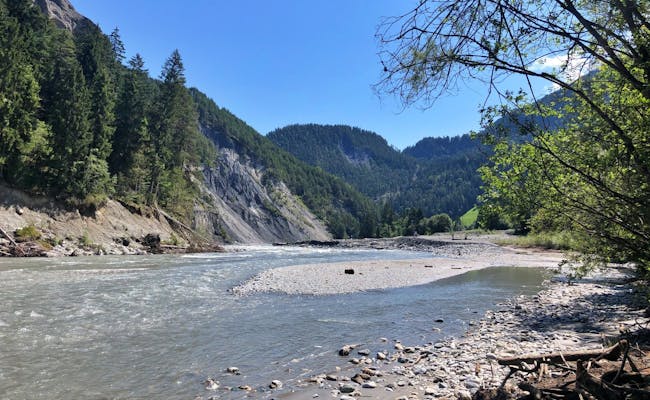 Rheinschlucht (Photo: Seraina Zellweger)
Rheinschlucht (Photo: Seraina Zellweger)Brambrüesch is a terrace on the mountainside above Chur. It lies at 1600 meters above sea level and is reached by two cable cars. The Chur-Dreibündenstein aerial tramway first goes to the Känzeli middle station. From there, a four-person gondola lift goes up to Brambrüesch.
The castles from the Middle Ages are only ruins, but still worth seeing. Pleasant hikes lead to the excursion destinations and are combined with a beautiful view.
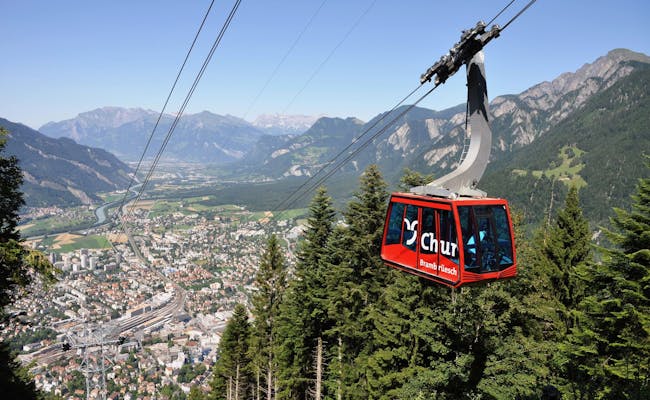 Brambrüeschbahn (Photo Walter Schmid Chur Tourism)
Brambrüeschbahn (Photo Walter Schmid Chur Tourism) Brambrüesch Känzeli Gondola (Photo Michael Christ Chur Tourism)
Brambrüesch Känzeli Gondola (Photo Michael Christ Chur Tourism)Roman Finds
In Welschdörfli, a part of the southern old town, you can check out the Roman settlement Curia Raetorum. For safety reasons, the site is located within a locked protective fence. You can get a key at the Rhaetian Museum at Hofstrasse 1 (Phone +41 81 254 16 40) or in the railway underpass at Chur Tourism (Phone +41 81 252 18 18). The fee is 3 CHF. You’ll get back the deposit (50 CHF) when you return the key.
Children's Theater Zapperlot
From September to June, your kids can take theater courses at Scalettastrasse 145. Alternatively, they can participate in various events at the children's theater Zapperlot. It’s located in the family center Planaterra in Chur. With circus weekends, theater workshops, pranks, or fools and jesters, the operators of the children's theater always come up with something new.
Giant Sequoia
Have you ever seen a giant sequoia? Giant sequoias are largely protected from forest fires by their bark. In Fontanapark, you'll find a magnificent specimen. Giant sequoias are primarily native to the Sierra Nevada (California) and can grow up to about 45 m high in Europe.
Church of S. Gieri
This church is located between the villages of Bonaduz and Rhäzüns. The medieval church features very impressive paintings and frescoes on the ceilings and walls of the Georgskirche. It’s definitely worth a visit.
The variety of excursion destinations invites you to experience them through hiking and mountain trekking. E-bike rides are also extremely popular in this area.
The most common activities around Chur include:
In addition to short and long hikes, you can find a moor course on Brambrüesch. The wooden walkways allow you to stroll easily over the flat moor. The moor is located south of the mountain railway station. The biotope is situated in the Riedboden area.
Day hikes can take you from Brambrüesch to Pradaschier. From there, you can take the chairlift down to Churwalden. Then, you can return to Chur by postbus.
Other hikes can take you to Dreibündenstein (2156 m above sea level) or further to Feldis. The Dreibündenstein is not a mountain peak but indicates a triple border point. This is where the borders of the former Free State of the Three Alliances met, which included the Gotteshausbund, the Zehngerichtebund, and the Upper or Grey Alliance.
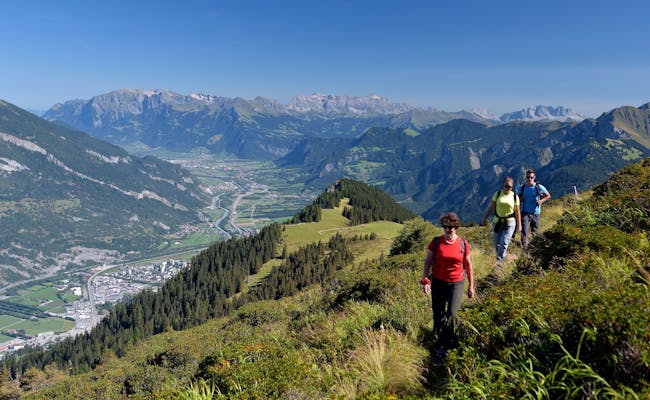 Hiking Dreibündenstein (Photo: Chur Tourism)
Hiking Dreibündenstein (Photo: Chur Tourism) Hiking (Photo: Chur Tourism)
Hiking (Photo: Chur Tourism)The mountain pass (Kunkelspass) above Tamins and Vättis is popular with mountain bikers.
For somewhat more leisurely tours by e-bike or bicycle, the Rhine Valley is quite suitable. You could, for example, take a self-guided e-bike tour through the Chur Rhine Valley incl. lunch. Lunch is reserved in three restaurants that are on your way.
A similar bike tour takes you through vineyard landscapes in Trimmis and Zizers. The culinary bike tour from Chur also has five villages and a castle along the way.
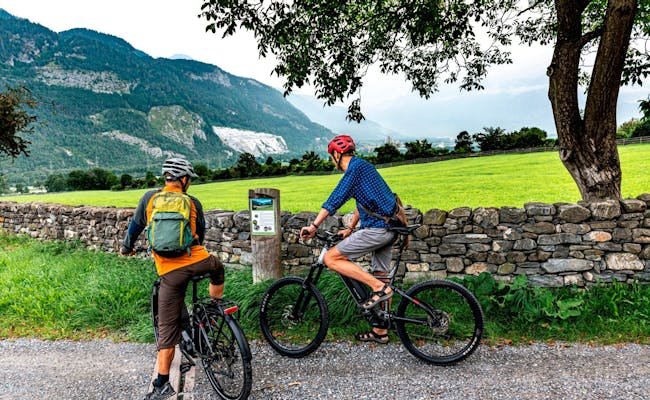 Cycling in the Rhine Valley (Photo: Armin Bearth Chur Tourism)
Cycling in the Rhine Valley (Photo: Armin Bearth Chur Tourism)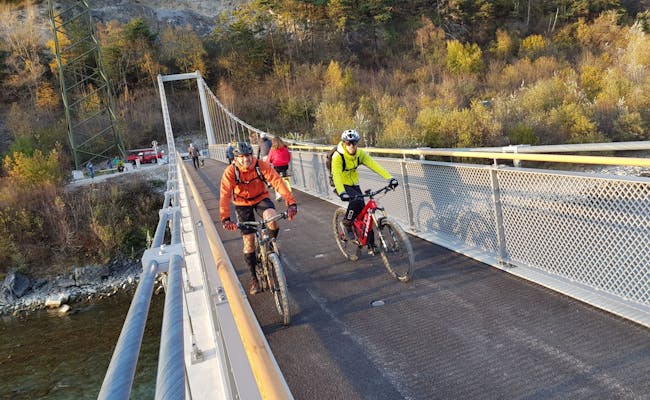 Haldenstein Bridge (Photo: Chur Tourism)
Haldenstein Bridge (Photo: Chur Tourism)Just 4 km north of Chur you will find the Haldenstein climbing garden. It is easily accessible and also designed to be child-friendly. The climbing garden has been around since the 1950s and was redesigned around 2013.
The via ferrata Pinut is located about 22 km west of Chur. From Fidaz near Flims, you walk for about an hour. The effort is worth it just for the great view from the metal stairs of the via ferrata.
All year round and in any weather you can climb in the city of Chur in the climbing center Ap'n Daun and in the bouldering hall Quadrel.
 Climbing Garden Haldenstein (Photo: Yvonne Bollhalder Chur Tourism)
Climbing Garden Haldenstein (Photo: Yvonne Bollhalder Chur Tourism)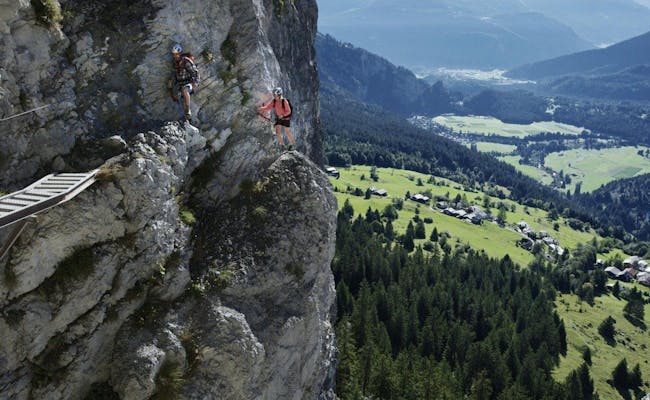 Klettergarten Pinut Flims (Photo: Chur Tourism)
Klettergarten Pinut Flims (Photo: Chur Tourism)The ski area Brambrüesch/Dreibündenstein is not snow-covered. It is located at an altitude between 1,170 and 2,176 m above sea level and can be directly reached from the center of Chur. Starting in 2025, a new 10-person gondola lift is planned to operate between Chur and Brambrüesch. The new middle station will be built in Fülian.
| Name | Capacity (people) | Lift type | Time (min) | Valley station height (m above sea level) | Mountain station height (m above sea level) |
|---|---|---|---|---|---|
| Chur - Känzeli | 45 | Cable car | 2 | 594 | 1,188 |
| Känzeli - Brambrüesch | 4 | Gondola | 6:20 | 1,190 | 1,597 |
| Brambrüesch - Hühnerköpfli | 1 | Ski T-bar lift | 11 | 1,611 | 1,950 |
| Hühnerköpfli - Furggabüel | 2 | Chairlift | 8:10 | 1,951 | 2,176 |
Brambrüesch also has a 100 m long kids' lift.
The area between Brambrüesch and the surrounding mountain peaks is great for snowshoeing starting from Chur. The trail to Pradaschier is particularly popular. From there, you can take a cable car down and return to Chur by post bus.
You won't get bored in Chur during any season. The 6 km long sledding run leads from the mountain station Brambrüesch down to the middle station Känzeli.
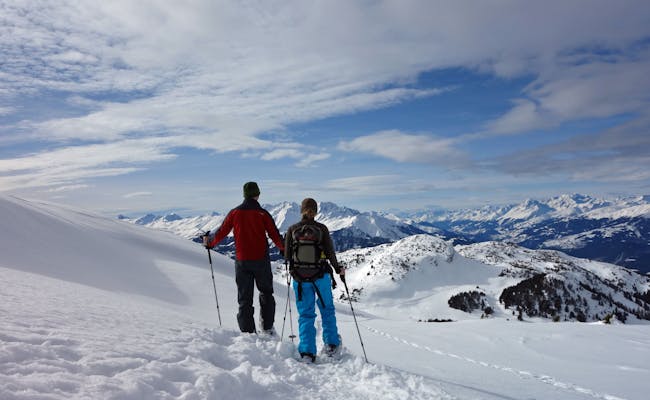 Snowshoe hiking (Photo: Chur Tourism)
Snowshoe hiking (Photo: Chur Tourism) Night sledding (Photo: Chur Tourism)
Night sledding (Photo: Chur Tourism)Colorful markets regularly decorate the old town of Chur. On Saturdays, the weekly market (farmers' market) takes place in the mornings during the summer months. On the Arcas, the Gänggelimarkt (flea market) is held on the first Saturday of every month, and the traditional Christmas market is also held every year in the old town.
The most popular event location in Chur is the Loucy - Bar Club Eventhall.
The most popular events in the calendar:
 Schlager Parade (Photo: Yanik Buerkli Chur Tourism)
Schlager Parade (Photo: Yanik Buerkli Chur Tourism)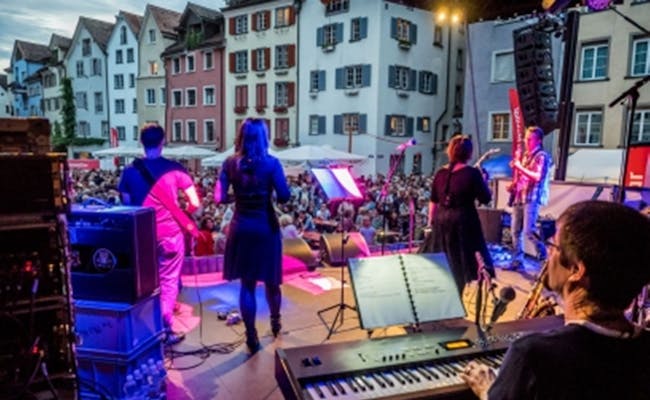 Churerfest (Photo: Chur Tourism)
Churerfest (Photo: Chur Tourism)Chur is a central transportation hub in southeastern Switzerland. Apart from the SBB and RhB trains and countless Postbus lines, long-distance buses such as FlixBus and IC Bus travel to Chur.
By car, you can reach Chur from the north and south via the A3 and A13 freeways. From Munich and Milan you can reach Chur in about three hours.
National and international trains terminate here. From Zurich, trains run every half hour to Chur and take between 75 and 90 minutes. From St. Gallen, you can also reach Chur every hour without changing trains within about 80 minutes.
In the arrival hall in Chur numerous post bus lines start and end in all directions. From Chur you can travel directly to Lenzerheide, Tschiertschen, Flims and many other remote places in the canton of Graubünden.
Chur has 14 hotels to offer. You will not find luxurious hotels here, these are rather in Arosa
The four-star hotel is centrally located and has modern facilities. Besides a fitness room, you also have a spa lounge with steam bath and sauna. Dogs are allowed.
Suitable for: Travelers with a medium budget
The small hotel has 28 rooms and a world famous restaurant (Arvenstube).It is located a few minutes walk from the train station in the middle of the old town.
Suitable for: City travelers with lower budget and lovers of good regional food
The Ibis Hotel offers simple rooms with private shower at a moderate price. Its pyramid shape makes it easily recognizable from a distance. It is located near the A13 freeway at exit no. 17 Chur-Süd.
Suitable for: Uncomplicated car travelers with low budget
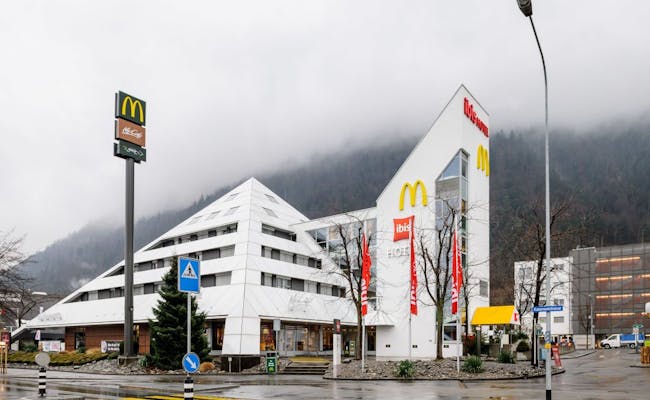 Ibis Hotel (Photo: MySwitzerland)
Ibis Hotel (Photo: MySwitzerland)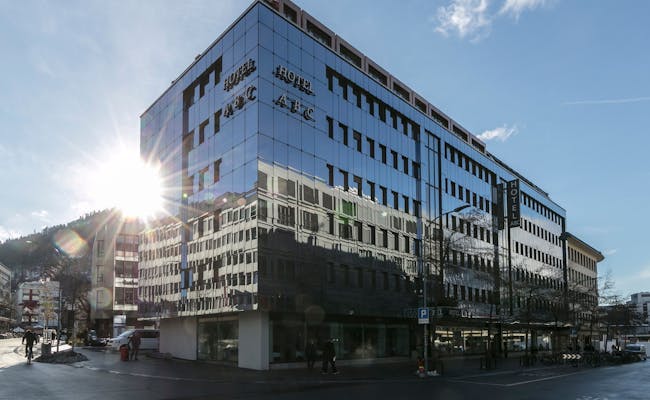 ABC Hotel (Photo: MySwitzerland)
ABC Hotel (Photo: MySwitzerland)In Chur you will find 130 restaurants with regional specialties and international cuisine.
The Bündner Stube is one of three restaurants in the Zollhaus. It offers a rustic ambience from more than 400 years of tradition. Whether it's beef fillet prepared in a variety of ways or meat fondue for two, the menu primarily offers fine Swiss cuisine.
Suitable for: higher price range, also gluten-free
On the first floor of the bar and event location, those who love nightlife with hot music and cool drinks meet from Wednesday to Sunday. Until the early morning, the DJ plays the music of today and yesterday
Suitable for: mixed groups and night owls
The simple Lebanese restaurant Valentinos offers oriental dishes in the Untere Gasse of Chur's old town. Among them are dishes with ostrich meat as well as vegan and vegetarian dishes.
Suitable for: low price range, also vegan
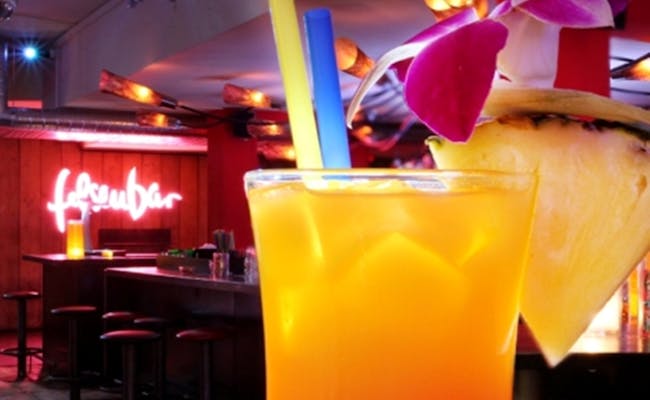 Felsenbar (Photo: MySwitzerland)
Felsenbar (Photo: MySwitzerland)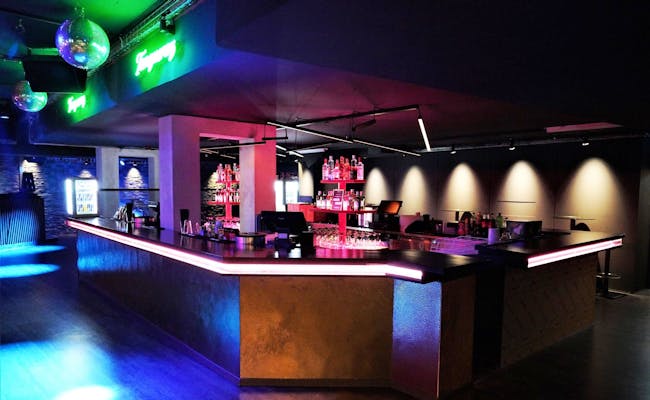 Felsenbar (Photo: MySwitzerland)
Felsenbar (Photo: MySwitzerland)